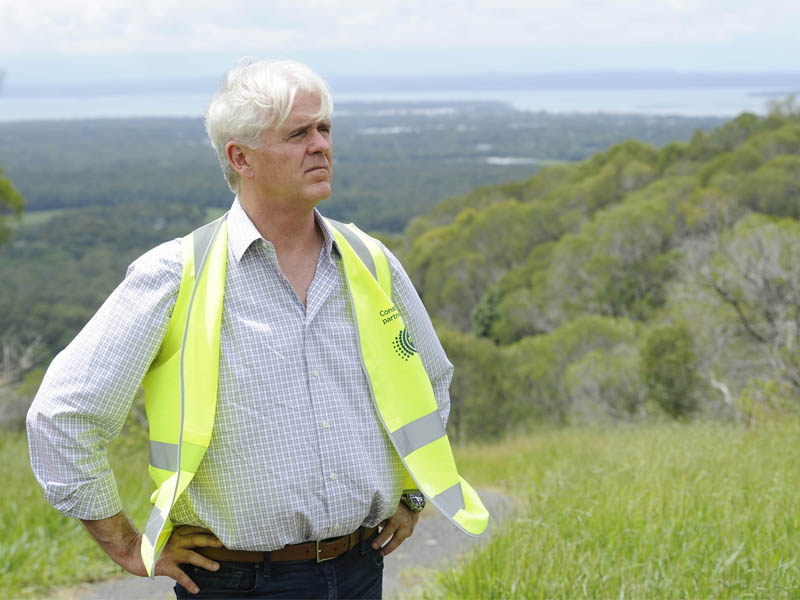No formal announcement has been made, but it is becoming increasingly obvious that NBN Co is looking at G.fast as the technology it will use to squeeze fibre-like speeds out of the copper connections that will deliver the NBN to most of Australia’s homes and businesses.
Yesterday NBN Co, in conjunction with UK carrier BT, released a report they had jointly commissioned from research consultancy Ovum talking up the technology, which NBN has already trialled.
And now NBN Co is also spruiking the newer XG-FAST technology, which developer Nokia says will be capable of ‘fibre-like’ speeds of up to 10 Gbps over copper wires of 30 metres or so.

NBN Co’s promotion of the technologies is particularly relevant in the context of the company’s recent announcement that 700,000 premises that was to have been serviced by remediated Optus HFC (hybrid fibre coaxial) cable will now be forced to use copper.
That is nearly 10 per cent of the NBN’s planned total, and was a major and controversial step backwards for the troubled NBN roll-out plans.
Add to that NBN Co’s late conversion to Fibre-to-the-Distribution Point (FTTdp), which it calls Fibre-to-the-Curb (FTTC), and a clear picture begins to emerge of the future of the NBN.
“Although NBN is planning to launch our initial FTTC services – expected to launch in 2018 – with VDSL technology, it is widely acknowledged across the industry that FTTC will eventually provide the perfect platform to deliver both G.fast and XG.FAST services,” NBN said in a statement.
When Labor lost power at the 2013 election and Malcolm Turnbull, as incoming Coalition Minister for Communications, threw away the fibre dream and replaced it with his so-called ‘multi technology mix), under which much of Australia was to be served by Fibre-to-the-Node (FTTN). Trouble was, the nodes – great ugly grey boxes – were too far away from many homes to get decent speeds over copper.
NBN has been flirting with VDSL2, a more mature but slower technology than G.fast or XG-FAST, to get decent speeds over copper. It is capable of supporting node-to-home distances, but its speed, only around 50 Mbps, is unlikely to be sufficient for future NBN demands.
Much has been written and spoken about the multi technology mix and the move away from Labor’s all fibre, little of it favourable.
Malcolm Turnbull’s promise of an NBN that would be delivered sooner and cheaper as turned into a cruel joke as schedules have been extended and costs have blown out to the same levels as Labor’s fibre model (though the Government can never bring itself to admit this).
Maybe, just maybe, G.fast and XG-FAST will ensure that the third leg of Malcolm Turnbull’s promised trifecta, that the Coalition’s NBN will be nearly as fast as Labor’s, will get up. Initial results are promising, and NBN Co seems to be softening us up for a G.fast announcement soon.
So, what is G.fast? Originally developed by Alcatel-Lucent, it has now been adopted as an industry standard. The contrived ‘FAST’ acronym stands for ‘fast access to subscriber terminals’.
It achieves its speed by using a number of technology tricks, such as vectoring, time division duplexing (TDD), and discrete multi-tone modulation, to squeeze more electrons down the copper pipe.
I visited Bell Labs in northern New Jersey a couple of years ago. It’s an impressive place, and the engineers there are on a kind of messianic mission to squeeze all the performance out of copper they possibly can.
We sat through a very technical presentation on how this can be done, and it seems there is a fair bit of life in the humble copper wire yet.
G.fast is now a proven technology. According to the new Ovum report it will be deployed at 29 million premises globally by 2012.
Ovum says BT is likely to the first operator, launching a commercial service in the UK next year, followed by Swisscom and Telekom Austria. On current form, NBN Co will not be far behind – why else would it co-sponsor a report into the technology?
NBN Co conducted its first G.fast trial in an office block in the Melbourne suburb of Carlton last October, reaching speeds of 600 Mbps over 100 metres of twisted-pair copper.
It is planning further G.Fast tests involving Retail Service Providers to “get a better understanding of how the technology will perform in a range of different circumstances in end-user premises.”
And just this week NBN went to the trouble of telling the world that it has conducted initial lab trials of with Nokia (which acquired Alcatel-Lucent and Bell Labs earlier this year). NBN’s CTO Dennis Steiger said: “Although XG-FAST is still in its very early stages of development, the lab trials we have conducted demonstrate the huge potential that the technology offers.
“XG-FAST gives us the ability to deliver multi-gigabit speeds over copper lines – virtually on a par with what is currently available on FTTH – but at a lower cost and time to deploy,” Mr Steiger said.
“We are the third operator in the global market to run lab trials of XG-FAST, following in the footsteps of BT last year and Deutsche Telekom in February. This shows that we are committed to delivering Australians the best possible broadband experience on the NBN network.”
Let us hope so.
Do you know more? Contact James Riley via Email.
